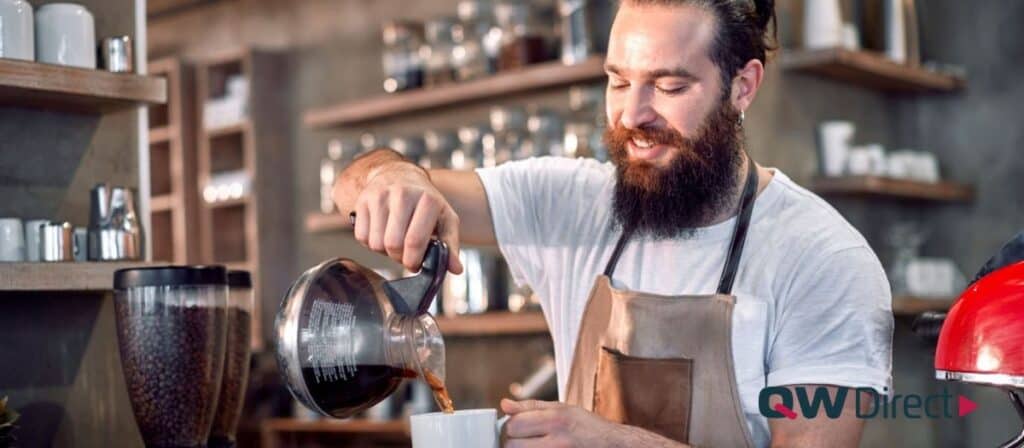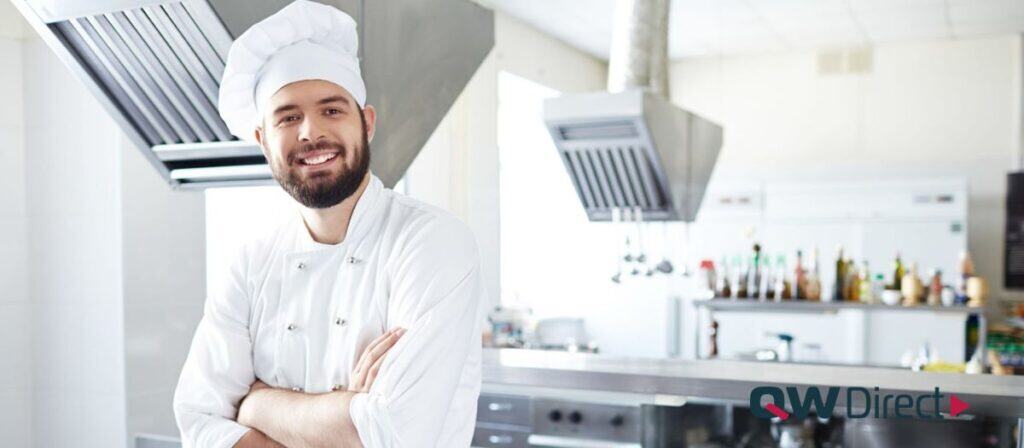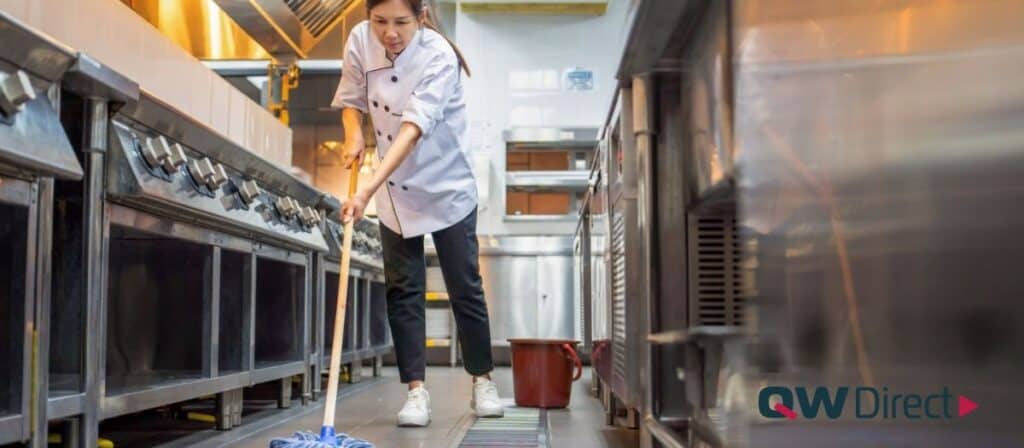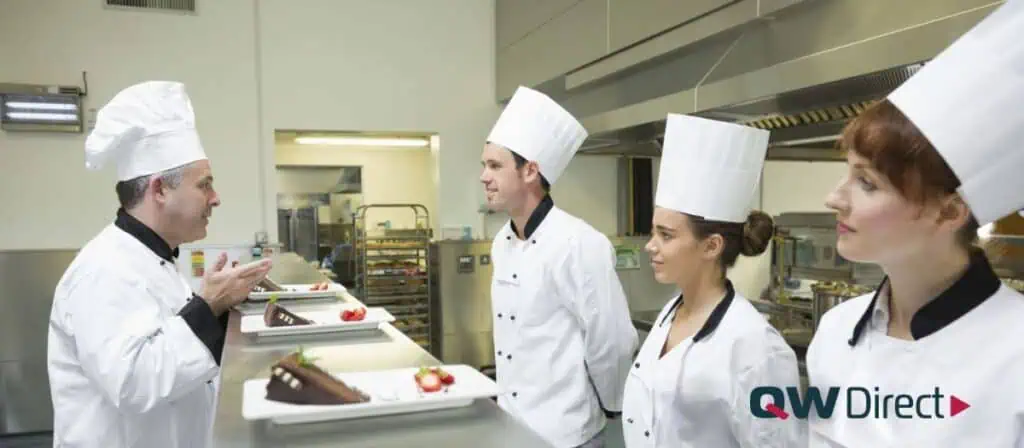BOH Tips to Improve Cafe Efficiency and Workflow
Your Back of House (BOH) is the engine of your hospitality business. When it runs smoothly, service is fast, customers are happy, and profits are healthy. When it’s inefficient, it bleeds money, time, and staff morale.
Optimising your BOH isn’t about cutting corners; it’s about creating smarter systems. This checklist provides seven actionable areas where strategic improvements can have an immediate and significant impact on your bottom line.
1. BOH Tip 1: Optimize Workflow Stations for Cafe Efficiency
Every second wasted at the service station multiplies over a busy day. A disorganised station forces staff to hunt, reach, and restock constantly, slowing down every single order. The goal is to create an ergonomic hub where everything is within immediate reach.
Every second wasted at the service station multiplies over a busy day. A disorganised station forces staff to hunt, reach, and restock constantly, slowing down every single order. The goal is to create an ergonomic hub where everything is within immediate reach.
Implement Colour-Coding: Use simple coloured stickers or dedicated organisers for your coffee cup lids (e.g., green for 8oz, blue for 12oz). During a chaotic rush, this eliminates the costly error of grabbing the wrong size.
Think Vertically: When counter space is tight, use tiered shelving to store sugars, stirrers, and sleeves. This clears valuable workspace and keeps essential items organised and accessible. A tidy station is a fast station.

2. BOH Tip 2: Improve Warewashing for Restaurant Cost Saving
Your dish pit can be a major bottleneck or a source of remarkable efficiency. Every plate or cup that needs re-washing costs you directly in four ways: labour, water, energy, and chemicals.
Use the Right Chemicals: Domestic detergents don’t cut it. Commercial-grade dishwashing liquids and rinse aids are formulated for high-heat machines and tough food grime. Using the correct, high-potency product is the single fastest way to ensure a perfect clean on the first pass.
Systemise Your Racks: Don’t use a generic rack for everything. Have dedicated glass racks to prevent chipping, and plate racks that allow for maximum capacity without overcrowding. A well-organised system makes loading and unloading significantly faster.
Systemise Your Racks: Don’t use a generic rack for everything. Have dedicated glass racks to prevent chipping, and plate racks that allow for maximum capacity without overcrowding. A well-organised system makes loading and unloading significantly faster.

3. BOH Tip 3: Janitorial Systems That Boost Cafe Efficiency
A robust cleaning system is non-negotiable for health compliance, but it can also be a source of hidden savings. It’s about using the right products and processes to get the job done faster and more economically.
Switch to Concentrates: Buying pre-mixed, ready-to-use cleaning solutions is often not cost-effective. Switching to commercial-grade concentrated chemicals that your team dilutes in-house drastically reduces cost-per-litre and saves significant storage space.
Create a Visual Cleaning Map: A simple, laminated diagram of your venue posted in the BOH is more effective than a text-based checklist. It can visually highlight all areas and specify daily tasks (e.g., sanitise all food prep surfaces) and weekly tasks (e.g., degrease floors), ensuring nothing is missed.
Match Mops to Floors: Using the right mop head for your specific floor type (e.g., synthetic yarn for rough, non-slip floors; microfibre for smooth tiles) makes the job faster and more effective, reducing staff labour time.

4. BOH Tip 4: Improve Back of House Inventory Efficiency
Poor inventory control attacks your profit from two sides: the cost of expired, wasted stock and the lost sales from running out of a critical item mid-service.
Democratise Your Par Levels: Don’t leave stock-checking to one person. Post a “Critical Stock Checklist” in the storeroom for high-turnover items (coffee beans, milk, takeaway cups, napkins). When a staff member opens the last box, they are responsible for marking it on the sheet. This creates a real-time view of what needs ordering.
Conduct a Weekly Waste Audit: For one week, use a clear tub to track every single item that gets thrown out due to spoilage or expiration. The visual and financial result is a powerful motivator to adjust order volumes. You can’t manage what you don’t measure.
Consolidate Your Suppliers: Are you ordering cleaning supplies from one company, disposables from another, and crockery from a third? Consolidating your orders with a single, reliable hospitality supplier not only simplifies your accounting but can often unlock volume discounts and reduce overall delivery fees.

5. BOH Tip 5: Back of House Equipment Layout for Speed
The physical layout of your BOH dictates how much energy your team expends. A poor layout can force staff to walk hundreds of extra, unnecessary metres every single shift.
Map the Product Journey: Trace the path of goods from the delivery door to the cool room, dry store, prep benches, cooking line, and finally the service window. Identify any backtracking or bottlenecks. The layout should flow logically in one direction to prevent collisions and delays.
Prioritise Preventative Maintenance: The cost of an emergency repair on a fridge or dishwasher mid-service is immense. Create a simple maintenance calendar to schedule regular, minor tasks like cleaning fridge seals, changing water filters, and descaling coffee machines. This prevents catastrophic failures during your busiest hours.

6. BOH Tip 6: Cafe Efficiency Through Sustainable Practices
Customers increasingly choose businesses that share their values. Making sustainable choices in your BOH is not just good for the planet; it’s a powerful marketing tool.
Market Your Materials: If you invest in biodegradable or compostable takeaway cups and containers, don’t keep it a secret. Add a small sign at your point of sale or a note on your menu. “We use 100% plant-based packaging to protect our environment.” This turns an operational cost into a visible brand asset.
Optimise Your Waste Streams: Invest in clear, colour-coded bin systems for general waste, co-mingled recycling, and organics/compost. This can significantly reduce your general waste collection fees and demonstrates a genuine commitment to sustainability that both staff and customers will notice.

7. BOH Tip 7: Train Cafe Staff for Back of House Efficiency
The most efficient systems in the world are only effective if your team uses them consistently. Clear training and defined roles are essential.
Develop Station Playbooks: Create a simple, one-page laminated guide for each key station (e.g., coffee machine, dish pit, prep area). Use pictures and simple bullet points to outline the process, cleaning standards, and restocking duties for that station. This ensures consistency across all staff members, no matter their experience level.
Empower Your Team: When you implement a new efficiency measure, explain the “why” behind it. “We’re organising the cup lids this way to prevent errors and make your job easier during the rush.” When your team understands the benefit to them, they are far more likely to adopt the new process.
By systematically addressing these seven areas, you can transform your Back of House from a cost centre into a powerful engine for profit, creating a more efficient, less stressful, and more successful business.